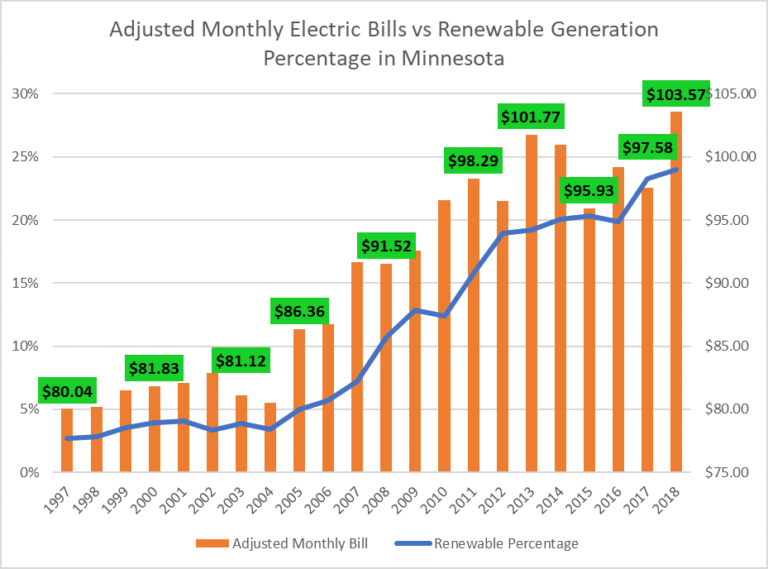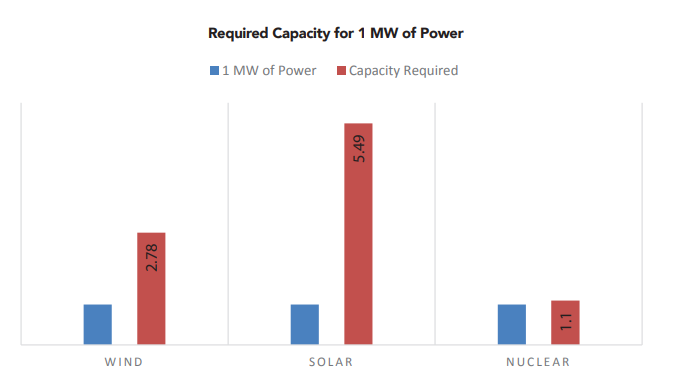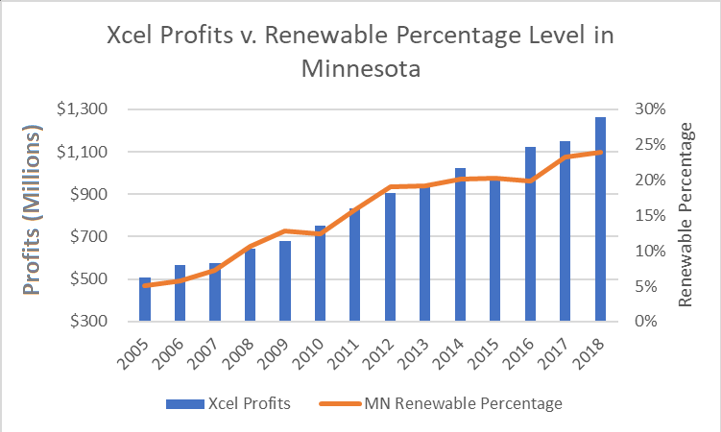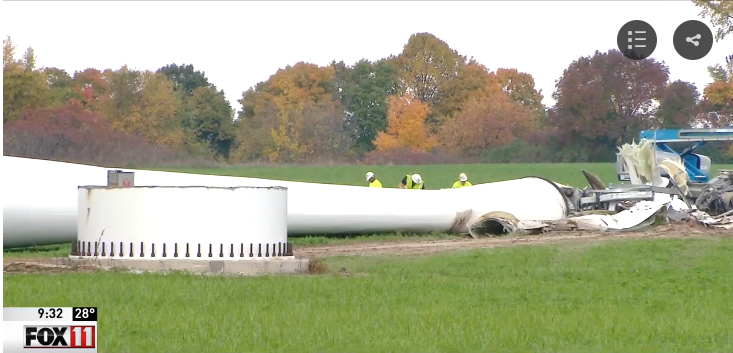Every Wind Turbine and Solar Panel Built Today Will Be Scrap Metal by 2050
Here today, scrap metal by 2050. That’s the rough life of wind turbines and solar panels, which only have useful lifetimes of 20 and 30 years, respectively, according to the National Renewable Energy Laboratory (NREL) and Energy Sage.
The short useful lifetimes of wind turbines and solar panels are one of the least talked about, but most important, aspects of energy policy. This fact becomes even more important if we are to believe liberal politicians that claim we need to spend billions of dollars on these energy sources because climate change is an “existential crisis.”

These short lifetimes have profound implications on the cost of using wind and solar. This is particularly bad news because Xcel Energy plans to squander $7.5 billion building 3,000-4,000 MW of solar (based on today’s costs for solar) and spend $2 billion maintaining wind turbines through 2034, even though these assets will still depend on natural gas backup when the wind isn’t blowing or the sun isn’t shining.
That’s a lot of money to spend on part-time energy sources that do not last as long as coal, natural gas, or nuclear plants, which can run for 40 to 80 years. The enormous pricetag and perpetual need to rebuild wind turbines and solar panels will continue to drive up the cost of electricity for Minnesota families and businesses.
Renewable energy groups won’t talk about this, but Minnesotans experienced record-high electric bills in 2018, according to Energy Information Administration data. The record-high bills occurred at the same time as record-high renewable generation. Coincidence? I think not.

This will get worse, not better, as we continue to build short-lived assets like wind turbines and solar panels.
Let’s compare the cost of building enough generation capacity to generate one megawatt (MW) of electricity from wind, solar, nuclear power. The U.S. Energy Information Administration assumes the cost of building one MW of wind costs $1.6 million, the cost of one MW of solar is $1.9 million and the cost of one MW of nuclear is $6 million.
However, the intermittency of wind and solar mean these facilities will not generate anywhere near their potential capacity of 1 MW. Data from EIA show Minnesota wind, solar and nuclear facilities generated about 35.9%, 18.2% and 96% of their generation potential, respectively. Therefore, it is necessary to build 2.8 MW of wind (1/.359), 5.5 MW of solar and 1.04 MW of nuclear to get 1 MW of electricity.

This brings the cost of building the necessary capacity to generate 1MW of electricity for wind, solar and nuclear to $4.5 million, $10.5 million and $6.25 million, respectively.
When the shorter operating lifespans for wind and solar are accounted for, however, the total cost of rebuilding wind turbines every 20 years brings the cost to $13.5 million per MW, and replacing solar on 30-year timescales results in a total cost of $21 million to generate electricity for 60 years.
Nuclear is clearly the superior value to consumers.
While the short useful lifetimes of wind and solar are bad for the pocket-books of Minnesota families, it is very good for government-approved monopoly utility companies and their shareholders.
In essence, the need to frequently rebuild wind turbines and solar panels transforms them into a cash-dispensing Merry-Go-Round for government-approved monopoly utility companies, like Xcel Energy, that make a guaranteed profit on every dollar they spend on infrastructure. Given this, it’s no surprise that Xcel has reaped record-breaking profits since it was first required to incorporate wind into its portfolio in 2005.

If liberal lawmakers truly believe climate change is an “existential crisis,” how can they seriously advocate for less reliable, more expensive, and shorter-lived sources of energy than new nuclear power, which would likely last until 2080, or beyond? In Minnesota, the House DFL explicitly said legalizing new nuclear power plants and allowing large hydro power to satisfy their proposed 100 percent carbon-free energy mandate would be a non-starter.
To me, this is evidence that the DFL’ers in the House and Governor Walz simply don’t understand how energy actually works, and that for them, this is more about political theater than actually building a reliable, carbon-free energy system. How else can you advocate for building tomorrow’s scrap metal, today?
